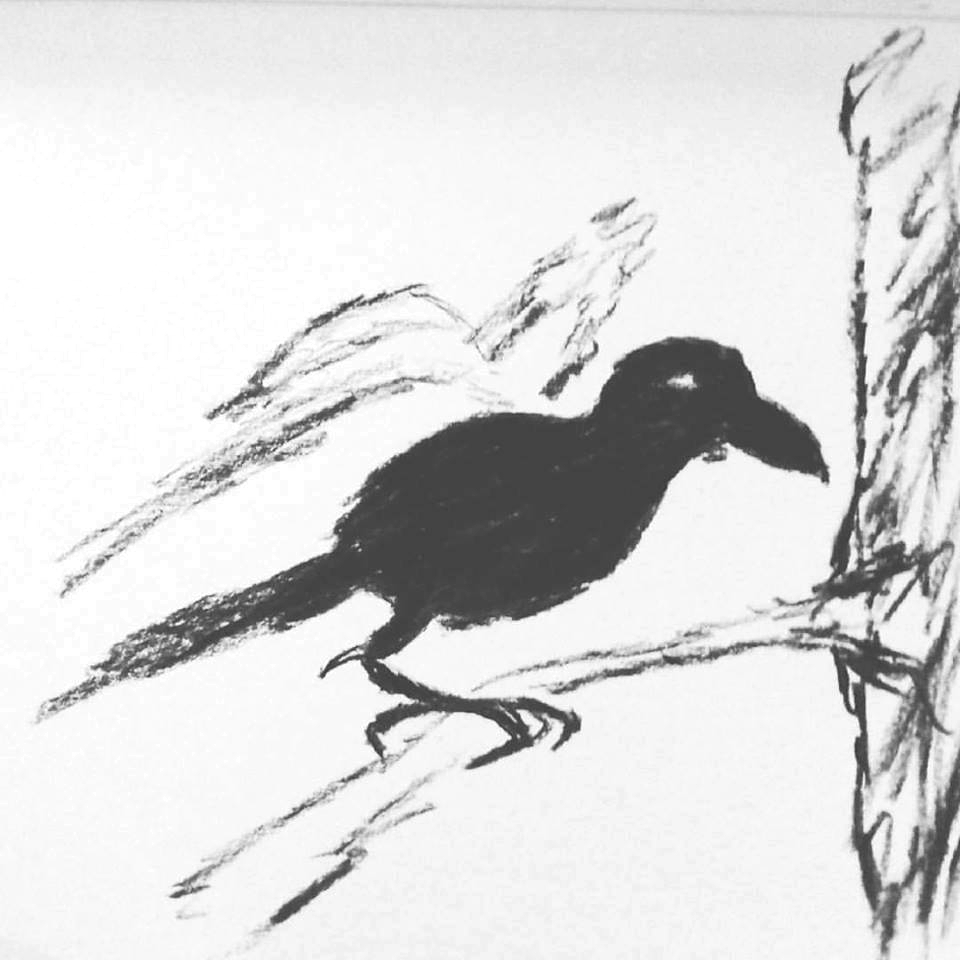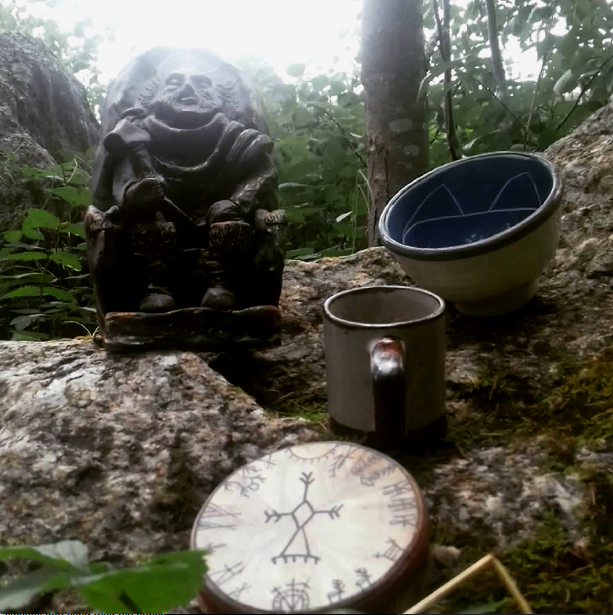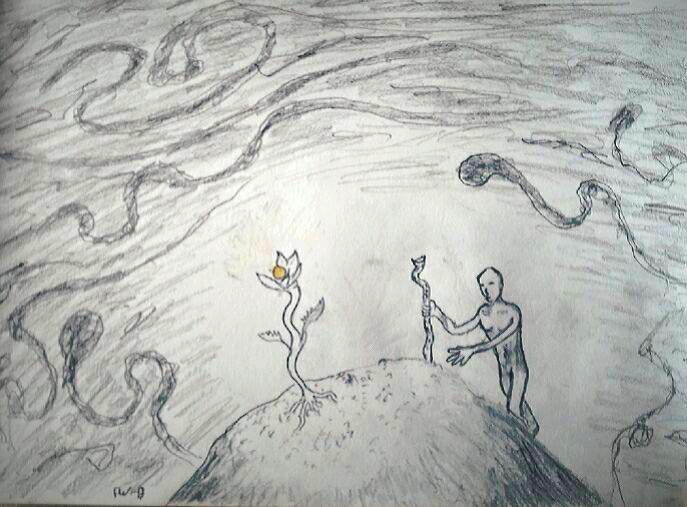![]()
From the point of view of many global onlookers, most of Western and Northern Europe might seem an oddly secular, even religion-less place. Despite a history of (ofttimes violent) religious upheaval during the Christian era and a relative growth of Islam in the present day, there is no denying that religion, and more specifically the expression of religious sentiment, has little to no place in the public sphere in many European nations.
As such, even simply discussing religion, and especially Pagan and magical ones, isn’t something nearly as self-evident as in other regions, like North America, where a similar degree of religious freedom is the law of the land. In such a context, the experiences of individuals who might want to experiment with various spiritual paths are rarely if ever publicized or talked about. Yet under this veneer of secularism lies a dynamic and ever-changing religious landscape that has much to offer to those willing to get real with religion.
In the Nordic nation of Finland where, as in many other countries of Europe, one’s faith and spiritual practices are rarely worn on the sleeve, journalist Fredrik Westblom has decided to go against the current: in the past year, between fall of 2016 and 2017, Westblom engaged with one different spiritual path every month, including a significant number of Pagan and magical ones. This journey of doubt, courage, and — more importantly — curiosity and open-mindedness, touches on some universal issues anyone who has engaged with religion has had to consider. Matters such as interfaith, community, syncretism, universalism, and personal growth are all tackled in this singular, no-holds-barred tale that might reminisce many about what once was their very own seeker’s journey.

Fredrik Westblom [courtesy].
I had, until this, held some form of “childhood faith,” but that was severely crushed when I found the ugly parts of religion and I quickly became disillusioned. If we were all created by God, and we were all valuable, as I had been taught, then why would it matter what your sexual orientation were, or your gender? Or, for that matter, what religion you were?
Over the years Westblom, who along the way obtained a graduate degree in political science and started working as a journalist, began to see himself more and more as a spiritual seeker all the while his immediate environment, together with the increasingly grim reality of the wider world ,continued to inform his worldview. This went on until around the turn of 2015 when local, and international, events led him to a profound realization:
This was around when gay marriage was finally made legal in Finland, and of the wars in the middle east. I saw the horrible things the Islamic State did, and other bits of news regarding all kinds of religious extremism. I became severely agitated and simply could not understand how people could be so caught up in their own mindset that they could kill for it. That is why I, there and then, decided that I should really study and experience other religions and talk to believers. If I did this, I reasoned, I would start a healthy debate regarding religion, one filled with willingness to learn rather than with a feeling of hate.

[The Raven. Fredrik Westblom.]
It was around this time that I found out about Chaos magick. The philosophy about this dogma-free system really spoke to me. The system emphasizes creative spirituality and that people should challenge their deep-held beliefs and adopt new ones at will. This practice, called paradigm shift, was what finally made me decide to do this.
In the end, and after careful consideration, 12 spiritual paths were selected, namely Taoism, Satanism, Christianity, shamanism, Buddhism, Discordianism, Mormonism, Vodoun, Islam, atheism, Ásatrú, and finally Wicca. In order to make the most of these religions within the relatively limited time frame during which they would be experienced, some were allotted to specific symbolic and religious periods:
I did try to match some religions to specific holidays – Christmas for Christianity, Easter for Mormonism, Islam during Ramadan and my own birthday for Satanism – and I kind of went from there.

Ásatrú worship in the Finnish woods [Fredrik Westblom].
On the other side of the religious spectrum, getting in touch with Mormons was far easier, as a pair of missionaries took the initiative to directly reach out to Westblom and invited him to their service, which ended up being “a very lovely experience” as it turned out. Perhaps a bit surprising for a country that did not see any formal establishment of the religion before 2001, Wiccans were rather easy to get a hold of, largely thanks to the prior existence of a loosely-tied organization of Wiccans, Pagans and other affiliates among the Swedish-speaking population of Finland to which Westblom belongs to.
Another key element of the 12-religion challenge was to connect with both the sacred places of worship and the holy scriptures associated with various traditions, an experience that varied considerably among them. When engaging with Islam, for example, the go-to place would of course be the mosque (“a silent, beautiful, and so serene place”), yet reading the Quran was actually not advised for a newcomer/seeker such as Westblom, and he was instead offered religious tracts of a more general nature; the explanation offered being that one needed to be Muslim in order to truly understand the meaning of the stories contained in the book.
During the more Pagan-oriented months of the challenge, the whole process of establishing a connection to the sacred was very different from what it was in their Abrahamic counterparts. Due to the acute lack of established places of worship for most of these religions, some thinking had to be done to find, and create, in some way, places that would befit acts of devotion and spiritual work. During the Wiccan and Ásatrú months, a local pub was turned into a meeting place for weekly “Pagan moots,” in order to discuss and debate everything Pagan-related with like-minded people, friends, and anyone willing to join the conversation. It was in the Finnish nature and landscape that Westblom found the perfect place to engage with the sacred and magical forces he had set to experience at the beginning of his journey:
I spent a lot of time walking around in my surroundings, and I felt immediately drawn to the forest and the seaside in Vasa. That is where I found my retreat. Later, during my Wiccan month I enacted a ritual by the sea. I used landmarks as corners of the circle – chimney pipes in the south, the sea in the west and so forth – and I called the God and the Goddess. It was the first time I really felt a connection to the divine, and I wondered if that was just a one time experience.
If the appeal of the coastline, where the sea and the forest meet made up for a logical sacred place for a Finn, other traditions brought the act of worship both closer to home and in more unusual places. Soon after the beginning of the challenge, a home altar was constructed which would see use throughout the whole year. When switching to Taoism, ancestor worship formed, together with stone-balancing meditation, the core of that month’s spiritual practice. In the course of other cycles, however, more complex rituals took place, such as when shamanism was explored through a drumming ceremony or during Westblom’s foray into Vodoun which called for a more complex liturgy:
This one was an interesting experience for me, because that was also when I fully wrestled with the concept of cultural appropriation vs cultural appreciation so I approached the Iwa respectfully. I went to a crossroads in an old factory quarter in Vaasa. It was the middle of the night, and I had prepared a veve and sacrifices to them (tobacco, rum, sweets) and sang their old songs, and I do believe that they answered.
If religious dedication and worship logically focused on different deities, spirits and forces over the course of the year, a certain number of rituals, ideas and practices remained a constant. Health, both mental and physical was one of the main point of focus during the journey. Mormonism, Taoism, and Islam gave the opportunity for dietary changes, such as excluding meat altogether (Taoism), or swearing off coffee and alcohol (Mormonism and Islam), something that most certainly had beneficial repercussions throughout.
When switching from religious tradition to religious tradition over as short a period as a year, a certain degree of syncretism is to be expected, even between faiths that are not traditionally seen as sharing much in between them. A practical example in the present case was how the Liber Resh ritual ended up becoming another constant that remained a part of Westblom’s spiritual practice throughout most of his yearly cycle, taking on slightly different directions depending on which faith was explored at that time:
I somehow ended up finding out about the ritual Liber Resh, written by Aleister Crowley, during my Satanism month (even though Crowley never was a Satanist himself) and it sort of clicked so I adopted it. It was a way for me to stay grounded in my day, and to get in touch with my spirituality. The practice, in its simplest form, is to “greet” the sun and do a short meditation four times of the day, at sunrise, at noon, at sunset and at night. Of course, the poem, incantation or prayer written by Crowley was Pagan in its nature, so I changed it accordingly, to be Christian, Pagan or even Discordian in its nature.

In the shadows [Fredrik Westblom].
These three paths are probably the ones that clashed the most, which is of course why I had them follow each other but atheism/agnosticism gave me the biggest wake-up call ever. I have always held a belief in the divine, but during this month I seriously questioned that fact and realized that yes, there is a possibility that the divine does not exist. It was a sobering experience. But then, during my Satanism month I felt great! I was so calm, and so secure in myself. That part faded during the later months, and I am working on achieving the same calm again. In the end of the year, I also realized that I was still battling depression from several years back. I am getting help for that now, in the form of therapy, and I truly believe that I could not have discovered the fact without this experiment. In a way, it was the beginning of my healing process.
At the closure of this spiritually-eventful year, Westblom had in actuality achieved much more than simply starting a conversation or fostering the idea of religious tolerance; he, quite literally, put his own soul in the balance and experienced firsthand, and straightforwardly, the countless religious dilemmas the millions of seekers, solitaries, universalists, and others who populate an increasingly-secular Europe and beyond often dread to face.
In the end, despite the numerous ups and downs that came along the way, the outcome of this experiment was mostly positive, both spiritually and mentally. As it turns out, experimenting with 12 spiritual paths over the course of a year did not result in an eureka moment where all of one’s apprehensions and doubts disappear in the face of a single, divine revelation. Rather, it lead to a general feeling of increased connection to the sacred in all of its diverse forms as well as a desire to go further in the search for the gods:
I think that my understanding of the divine has changed, I feel more connected to it now, but I am no more sure about what the divine is than I was before. However, now that I have felt and studied other people’s beliefs and lived their faiths, I feel more connected to them and to it. I truly believe that we are all looking for the same thing, only from different perspectives. As for myself, I actually do not think that I can ever settle down with just one religion. Rather, I will continue searching and exploring religions. I am now planning on doing the traditional “a year and a day” initiation into Wicca and witchcraft, and after that I will probably explore Christianity more thoroughly.
As for the more public side of his project, Westblom, besides being very active on social media throughout his journey (the posts in question can be accessed on Facebook and Instagram through the hashtag #tolvreligionerpåettår -in Swedish-), gathered enough attention that he ended up being interviewed by the national radio channel YLE on no less than three separate occasions. Both on social media and on the waves, the feedback that was received was overwhelmingly positive, something that might possibly indicate that the general public might be slowly warming to a broader and more public expression of religious sentiment. In the long term, a book is also planned (“I think that this very interview might be the start of that”), something that might end up turning into a spiritual journey of an even broader scale and reach, gods willing.
* * *
The views and opinions expressed by our diverse panel of columnists and guest writers represent the many diverging perspectives held within the global Pagan, Heathen and polytheist communities, but do not necessarily reflect the views of The Wild Hunt Inc. or its management.
The Wild Hunt is not responsible for links to external content.
To join a conversation on this post:
Visit our The Wild Hunt subreddit! Point your favorite browser to https://www.reddit.com/r/The_Wild_Hunt_News/, then click “JOIN”. Make sure to click the bell, too, to be notified of new articles posted to our subreddit.